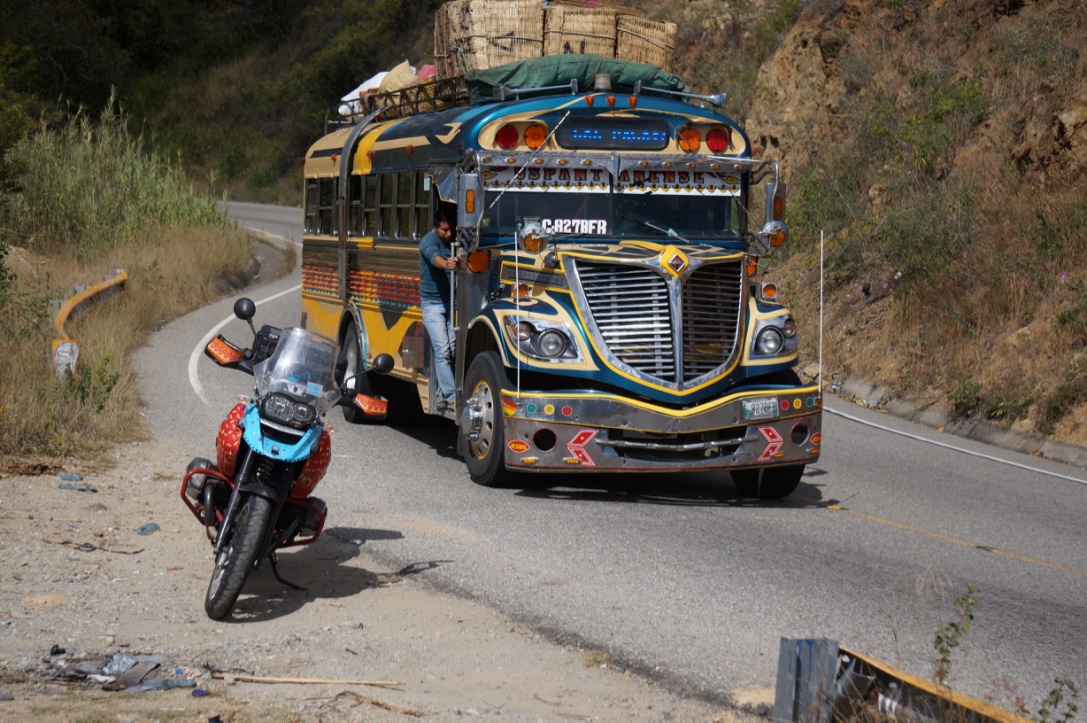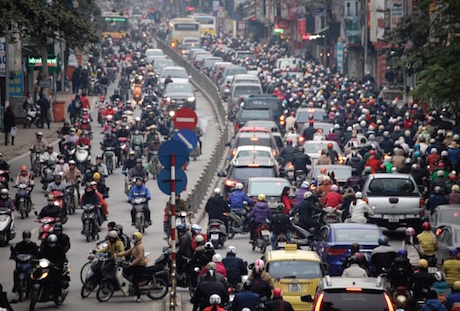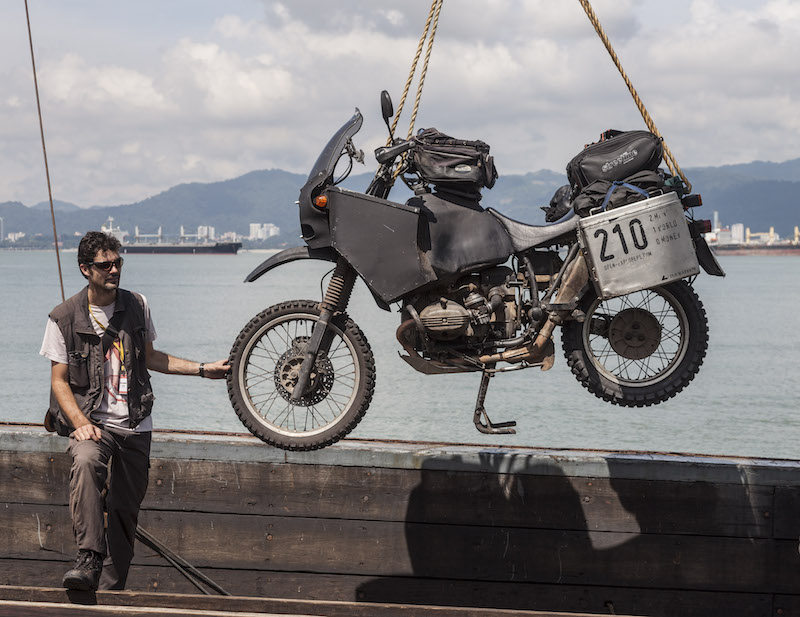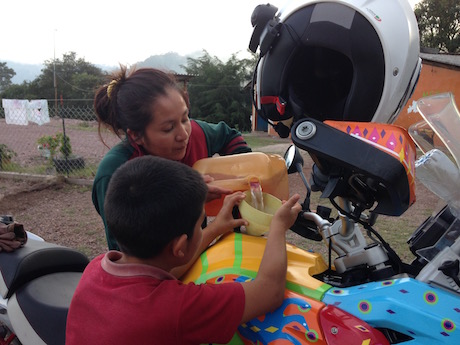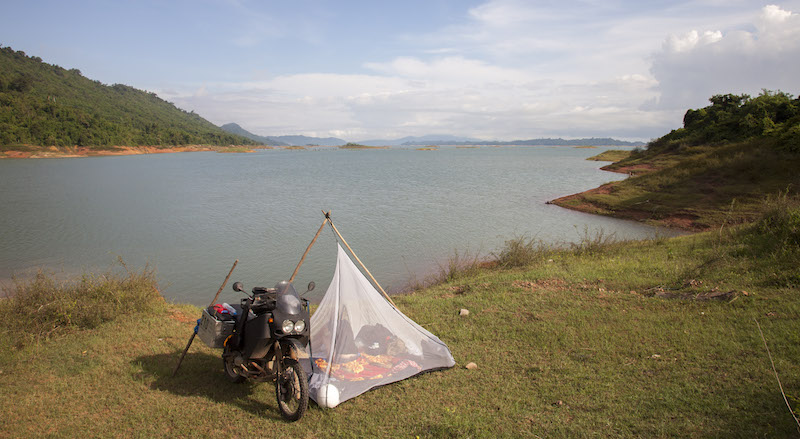The idea of traveling the world on a motorbike may seem laughable, especially on a budget. In reality, it is not just possible to do so, but quite a number of adventurers, have already done so.
Guest blogger Peter King says the goal of this article is to assist would-be adventurers in planning a successful motorbike trip.
Whether you want to travel around the world or just pick a destination and rent a bike, I hope to simplify the process for you.
Generally, the preparation of traveling around the world on a motorbike entails two main stages or steps. The first is budgeting for the bike while the second step is budgeting for oneself. They are both elucidated in details in the subsequent discussions.
Part I: Pick a destination
This can be the hardest part of the whole trip. Committing on a starting point is easier said than done. I would highly recommend starting your journey in Vietnam, since it’s a good starting point to reach just about any part of Southeast Asia. It’s also very common to ride and rent motor bikes there, and beyond affordable. For my trip, I did my research and decided to start my journey in Ho Chi Minh, Vietnam due to the amount of bike shops in the area.
Part 2: How to Acquire the Bike
The first concern is how the bike may be acquired for the trip. There are several options available. These include purchasing a personal bike to be used for the entire trip or renting one in each pit stop.
In case you happen to plan to travel the South East Asia area (specifically Vietnam), renting a motorbike in Ho Chi Minh is pretty easy and is very affordable. It’s a great spot to begin your motorbike trip, and I speak from personal experience.
This is due to the following reasons:
The existence of numerous bike rental facilities
The city of Ho Chi Minh is home to several bike rental facilities. For this reason, getting a bike is not only very convenient but also less time-consuming. Moreover, a bike may be accessed in just about any street corner.
Comparatively low rental costs
On the whole, bike rental costs in the city are much lower than other areas within the larger South East Asia region. It is possible to rent a bike for as little as $50 a month!
Wider acceptance and applicability
Ho Chi Minh is largely a bike riding city. Many city dwellers choose to commute to and from the city by use of bikes rather than taxis, personal cars, or passenger service vehicles. There are, as a matter of fact, lanes that are exclusively dedicated to bike riding.
Flexible rental options
Most rental facilities offer flexible rental options to their patrons. These range from several days to several weeks, months and even 90 days at a time. Each patron is thus granted the freedom to determine the exact duration he intends to utilize the bike and is not tied to some predetermined durations.Other options may be applicable to other cities and parts of the world. Alternatively, a combination of any two or more options may be considered.
Means of transporting the bike worldwide
Once the bike has been acquired, especially by buying a personal one, the next major concern is how the bike may be transported to the intended location of use. This stems from the fact that certain legs of the journey will usually entail taking flights, boarding ships, or boarding passenger service vehicles. This is due to the obvious fact that logically speaking, it is simply impossible to ride a bike the entire journey. The various options that may serve the purpose are shipping, air transportation, and transportation by road. The urgency with which the consignment may be needed as well as the cost implications should inform the choice of the most appropriate option.
Fuel costs
Fuel is understandably a major issue in such a journey. That’s because it is the fuel that powers the motorcycle and in so doing, enables it to travel from one point to another. The main factors that may influence the quantity and by extension the cost of fuel consumed are the fuel efficiency of the said motorbike, the distance covered, and the unit cost of fuel. Online searches of the prevailing fuel costs may provide a rough guide on the total amount of money that may be spent on fuel throughout the trip.
Ride maintenance
Certain issue such as oil changes, breakdowns, wearing off of tires, and chain replacement are naturally bound to arise in such trips. To reduce the amount of money that may be spent in carrying out such repairs and tasks, the rider/adventurer ideally ought to learn the various ways and means of carrying out as many of such tasks as possible.
Part II: Budget for yourself
After planning a budget for the bike, the next step entails setting a budget for the rider/adventurer himself. Throughout such a trip, the rider is naturally confronted by two main needs. These are personal accommodation and food.
Personal accommodation
These include such things as the bedrooms wherein the night times may be spent, toiletries, water, showers, toilets, and any other need that may be necessary to maintain the comfort and bare existence of the rider while on such a trip. Appropriate search ought to be carried out beforehand to identify any motels, hostels, hotels, or lodging facilities that may be in existence on the planned route. Advance accommodation may also be necessary in some instances.
Food
Two options through which food may be supplied during such a trip do exist. The adventurer may opt to cook for himself. This is cheaper than buying ready-made food from a restaurant but is time-consuming. The other option is to buy ready-made food. It is very convenient but quite expensive. In cases where hygiene is neglected, there is a great possibility of contracting Cholera. Appropriate measures ought to be taken to settle on the best option under the given circumstances.
Conclusion
Traveling the world on a motorbike is a fascinating and rewarding experience indeed. Any person alive today ought to make every effort to make such a trip at least once in his lifetime. In order for the exercise to be conducted successfully, advance planning ought to be made. This should be followed by a budget with a rough estimate of the amount of money that may be spent on the trip, plus savings.



